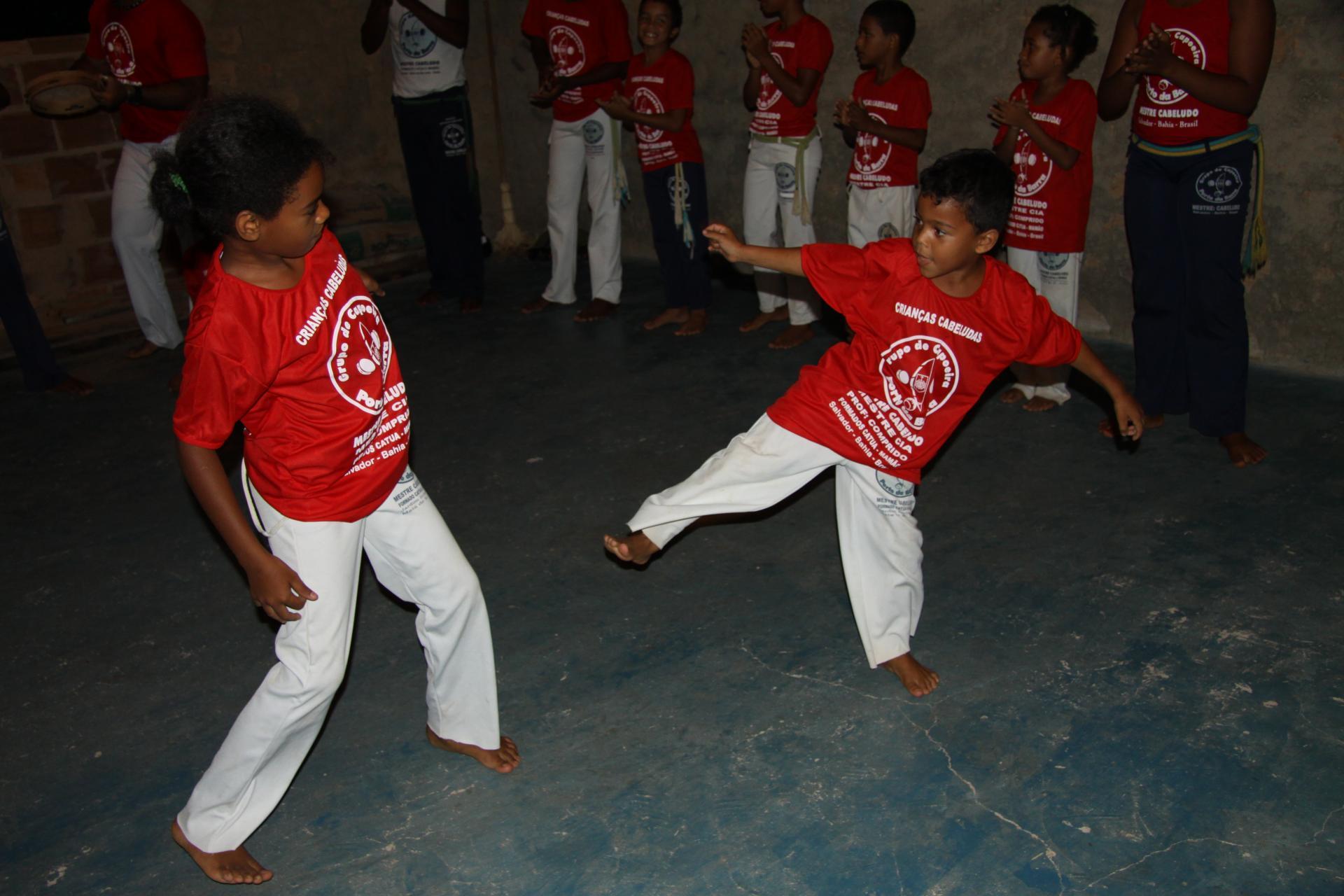Trend Sport & Lifestyle: Capoeira Experiences a Revival

Brazil as trendsetter
Capoeira is not only known to Brazil travelers. Meanwhile, the gentle martial art is practiced worldwide and has reached a high degree of popularity. In European cities, you often meet a group of Capoeiristas during a picnic in the park. Organized in clubs, dressed in white and barefoot, they practice their sport, which is a mixture of music, acrobatics, dance, attack and defense movements. Also, numerous fitness studios have discovered the attractiveness of Capoeira and offer courses. Whether young or old, female or male, with previous knowledge or without, everyone interested can actively practice Capoeira. What makes this trendy sport from Brazil so unique we would like to give you a short introduction.
The essence of Capoeira
Capoeira is an acrobatic martial art, which consists of three essential elements. Firstly, the formation of the group into a circle, the so-called roda, in the center of which two fighters meet.
On the other hand, the musical accompaniment plays an important role. The Capoeiristas , who form the circle, sing traditional rhymes and play instruments such as berimbaú (wooden musical bow with sound calabash), atabaque (barrel drum) and pandeiro (hand drum).
The third formative element of Capoeira is the rhythmic movements of the two actors in the center of the circle. They lurk, try to read the opponent, uncover his strengths and weaknesses, attack and repel. This happens in a playful form. Dancing turns and jumps, which show high body control and athleticism, are used.
Today, there are three styles of this sport. "Capoeira Angola" originated during the times of slavery in the Brazilian northeast under the guise of a game. This variation is characterized by slow movements near the ground and the detailed study of the opponent. Black pants and yellow tops are worn with it.
The "Capoeira Regional" comes up with faster movements, especially to the nimble music of the berimbaú. The style can be described as more efficient and less acrobatic. With the lifting of the ban on Capoeira, the need for camouflage as a game was eliminated for this more modern version. The clothing is white.
In the "Capoeira of the present", both styles are mixed.
Curiosities
Different colored cords inform about the skills of the individual fighters. Each club regularly organizes batizados (belt tests), where new cords are awarded.
The Capoeiristas use apelidos (nicknames) to disguise their identity, a legacy from the times of slavery.
At the center of Capoeira is the malícia, literally translated "the evil". This translation is misleading. What is meant, is the ability to guess the opponent's motives and the "deviousness" to turn this into one's advantage.
Historical development
Already from the 16th century, there are first records about Capoeira in Brazil. The country belonged at that time to Portugal. Numerous Africans were deported from the Portuguese colony Angola to Brazil to satisfy the slave hunger of the sugar cane plantations. Especially in Bahia, the slaves were used in forced labor and were exposed to inhuman physical and psychological violence. The plantation owners suppressed all individualism and the preservation of African cultures. Corporal punishment was part of everyday life on the plantations. So the slaves developed Capoeira to preserve their cultural identity, to stay physically fit and to reduce the pressure of work without openly rebelling. They adopted their traditional African rhythms to camouflage the fighting movements like a dance.
Until 1937, martial arts remained officially banned in Brazil, and Capoeiristas were prosecuted by the police. The turning point came when the then President Getúlio Vargas saw a demonstration and declared Capoeira the Brazilian national sport. The steady rise of the sport began, culminating in the recognition by UNESCO in 2014. Since then the "Roda de Capoeira" has been considered a "world cultural heritage of mankind".
Origin of the word
Just as versatile as Capoeira itself is the derivation of the term. There are four different interpretations. Firstly, Capoeira can be derived from the Angolan Bantu language, where it stands for religious rites, dance and fighting movements.
The Portuguese word "capão" means "chicken fight" and refers to the inferiority of slaves as cattle, which compete in mutual fights.
Another possible origin lies in zoology. Brazil is home to a bird of the same name, whose song was imitated by the first Capoeiristas in their music.
In the language of the Brazilian indigenous people, the Tupi Guarani, "caá-pûera" means "cleared jungle seal". The term describes the hidden places where the slaves practiced Capoeira.
Meaning of Capoeira for the society
Capoeira has always been more than just physical exercise. For the slaves, it offered the possibility of a temporary escape from colonial rule. Even today, it has the power to positively influence people's lives. ABADÁ Capoeira is the national Brazilian association for the promotion of the art of Capoeira, based in Rio de Janeiro. This superordinate non-profit association is involved in a wide variety of projects. Capoeira serves as a tool and motivator for the improvement of living conditions. ABADÁ wants to create awareness for social, environmental and educational issues. All information about Capoeira is bundled here, data is collected and research is done. Teachers are upskilled and students are trained.
In all Brazilian states and 58 countries on five continents, the association has a representation. In this way, Capoeira carries the Brazilian culture beyond the borders of the country.
Perhaps this reading has inspired you to your next Brazil vacation. Why don't you spend the Day of Capoeira, which is celebrated every 3rd August, in Bahia, the home of the trend sport? We can warmly recommend a visit to a Capoeira school in Imbassaí. There, disadvantaged children are taught for free to motivate them for a self-determined life. Half of your contribution goes directly to the children!
Source: www.grupocapoeiranagoas.blogspot.com

